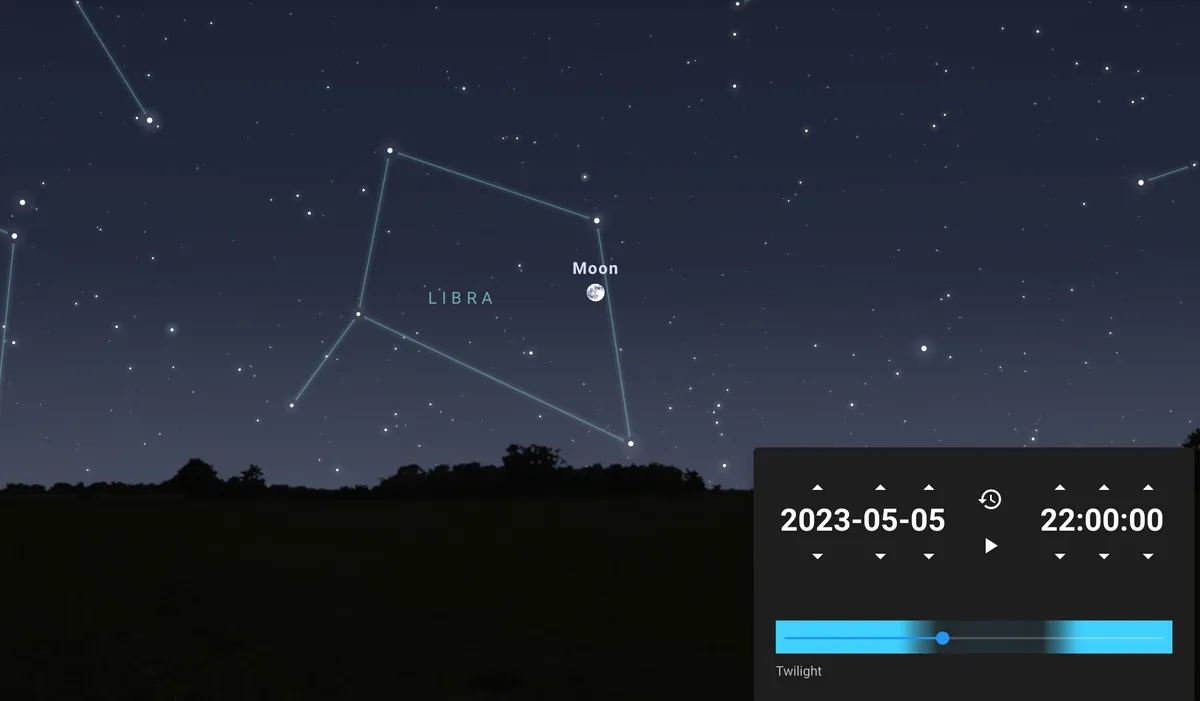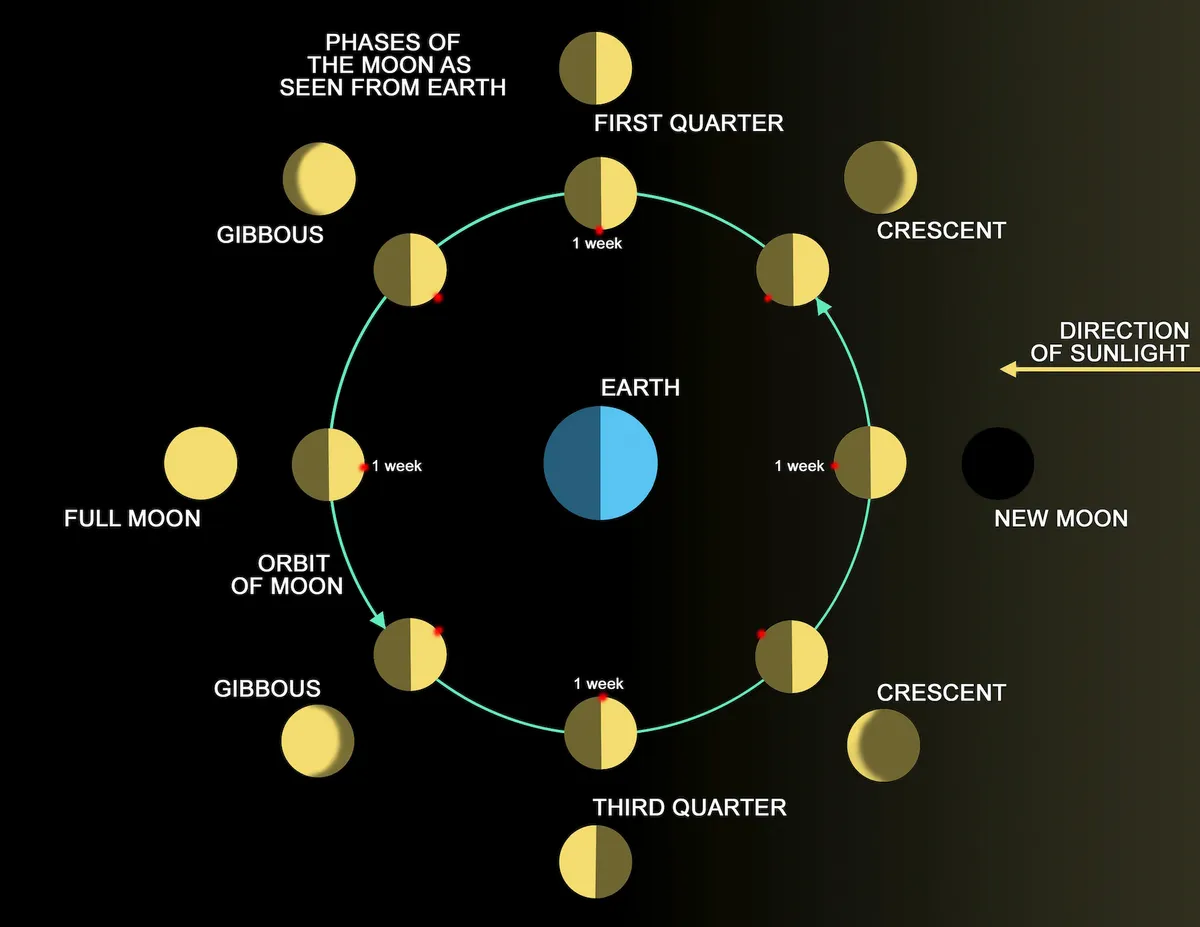Also known as the Flower Moon, May's full Moon marks a noticeable seasonal change in the northern hemisphere, as trees and flowers collectively burst into bloom. And this month, it brings with it a penumbral lunar eclipse on the eve of the King's Coronation.
But when exactly can you see the Flower Moon? Which constellation will it appear in? And, what's the best time to view it? Answers to these questions, and more, are below.
For those who missed it, you can check out our fantastic gallery of thebest pictures from the Spring Equinox 2023. If you’re looking forward to clear nights this year, why not plan ahead with ourfull Moon UK calendarandastronomy for beginnersguide?
When can I see the Flower Moon 2023?
The Flower Moon will be visible in the evening of Friday 5 May 2023 and in the early morning of the Coronation, Saturday 6 May 2023, in the UK and around the world.
The Flower Moon will be nestled in the constellation Libra, the only one of the Zodiac constellations to represent an object (weighing scales) rather than a person or character.

On Friday 5 May from London, the Flower Moon will rise at 8:35pm from the east-southeast and set at 5:31am the next morning in the west-southwest.
The Flower Moon this year will reach peak illumination at 5:34pm on the afternoon of Friday 5 May. However, as this is a few hours before the Moon rises at 8:35pm, we won't be able to see the exact moment when it reaches syzygy (when the Moon is directlybetween the Sun and the Earth, in a straight line).
The night before full on 4 May, the Moon will be 3.3 degrees north of Spica, the brightest object in the constellation Virgo. Then two days after full, the Moon will be 1.5 degrees north of Antares, a bright red supergiant in Scorpius, and on 13 May will be in Aquarius, around 3.3 degrees south of a magnitude 1 Saturn in the pre-dawn sky.
What’s special about the Flower Moon in 2023?
Aside from heralding in the new King's Coronation, the Flower Moon on the 5 May brings with it a penumbral lunar eclipse. This subtle eclipse will be largely invisible to us here in the UK, as mid-eclipse occurs over the Indian Ocean.
Eagle-eyed observers in mainland Europe might notice the Moon becoming slightly darker than usual, possibly with one side of the Moon more in shadow. But sadly, it won't turn red.
The next lunar eclipse that we'll be able to see from the UK will be a partial lunar eclipse on 28 October 2023, but we’ll have to wait until 14 March 2025for the next total lunar eclipse.
When is the best time to see the Flower Moon?
The best time to see the Flower Moon from the UK will be soon after it rises above the horizon, between 9 and 10pm, as we may also be treated to the Moon illusion (the Moon rises at 8:35pm).
The Moon illusion is when the Moon appears much bigger during moonrise and moonset while it’s low on the horizon. Unfortunately, it’s just our human eyes playing tricks, and we’re still not sure why this occurs, but a popular opinion is that our brain will compare the Moon with distant objects on the horizon (such as masts or buildings) and fool us into thinking it’s much larger.
If you are unable to see the Flower Moon at its peak, it will also appear full for a day on either side of full, including during the Coronation celebrations on the 6 May.
Why is it called the Flower Moon?
You've probably already noticed the explosion of colour happening in the natural world at the moment, so it's no surprise that May's full Moon has been named after the abundance of flora, blooming in many parts of the world. It's a prelude to the summer months and the name has stuck with popular media.
It's also known as the ‘Blossom Moon’, ‘Corn-planting Moon’, and, among the Cheyenne of the American Great Plains, the ‘Moon when the horses get fat’.
Is the Flower Moon 2023 a supermoon?
No, the Flower Moon 2023 is not a supermoon.
A supermoon occurs when the Moon, which is orbiting the Earth in an elliptical orbit, is at the perigee, its closest point to Earth along this orbit. When the Moon reaches perigee at the same time as a full Moon, it appears larger and a little brighter than an average full Moon, giving us a supermoon. The technical term for a supermoon is a perigee-syzygy Moon.
A supermoon is an unofficial classification for when the Moon is situated 360,000km (or less) away from Earth in its orbital path, and we'll often see two or three full supermoons in a row, giving us a 'supermoon season'.
The opposite is also true. When the full Moon is at the furthest point away from Earth along this orbit, this is called the apogee, we get a micromoon as the Moon appears smaller.
The first supermoon of 2023 will be 1 August, with a rare blue supermoon at the end of the month, on 31 August. The July (361,934km) and September (361,552km) Moons come pretty close, so although will appear bigger and brighter to us – are slightly over the 360,000km distance. That being said, whentaking into account the preceding or succeeding apogee and perigee, the July and September Moons do classify as a supermoon.
How often do full Moons occur?
"We call it the full Moon when the Moon is fully illuminated by the Sun. That only happens when the Moon is completely opposite to the Sun in the sky – so you always see the full Moon rising just as the Sun sets,"explains Dr Darren Baskill, astronomy lecturer at the University of Sussex.
"Likewise, the full Moon will set when the Sun rises. The full Moon is highest in the sky in the middle of the night when the Sun is at its lowest point, well below the horizon," says Baskill.
Full Moons occur every 29.53 days. Or, 29 days, 12 hours, 44 minutes, and 3 seconds to be exact. Also known as one synodic month ('synodic' being a Greek word meaning 'conjunction'), it's calculated by how long it takes the Moon to orbit the Earth once and complete one lunar phase cycle, as measured from new Moon to new Moon.

We would usually have 12 full Moons in a calendar year, and they occur when the Moon is fully illuminated by the Sun. This happens when the Earth is located directly between the Sun and the Moon.
Because the lunar cycle takes a little under one calendar month, we sometimes get 13 full Moons in a year, which occurs around every 2-3 years. This means that in one of the 12 months will get two full Moons, and this extra full Moon is known as a ‘blue Moon’. The next blue Moon will occur this summer, in August 2023. Similarly, we sometimes get two new Moons in a month, and this extra new Moon is known as a black Moon.
Why isn’t there a lunar eclipse every month?
We don't get a lunar eclipse every month because the Earth and Moon orbit on slightly different orbital planes.
"Because the Moon’s orbit is tilted with respect to the solar system, the Moon usually passes just above or below the shadow of the Earth, preventing us from seeing a Lunar Eclipse every month," Baskill says.
The Moon’s orbit is inclined by around 5° to Earth’s orbit, which is enough so that it often misses Earth's orbital plane.
"But twice a year, when the Moon is moving from being above the solar system to below, or vice versa, we are lucky, and we get to witness both a lunar and solar eclipse just two weeks apart, somewhere on Earth," explains Baskill.
If the Moon was on the same exact ecliptic plane, it would result in a lunar and solar eclipse every full Moon and new Moon phase of the lunar cycle.
About our expert, Dr Darren Baskill
Darren is an outreach officer and lecturer in the department of physics and astronomy at the University of Sussex. He previously lectured at the Royal Observatory Greenwich, where he also initiated the annual Astronomy Photographer of the Year competition.
Read more about the Moon: